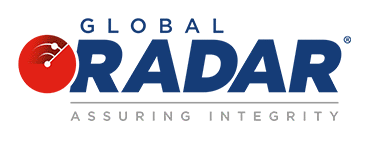It is a given that AML software has to evolve all the time to cope with money laundering. Software packages have to accommodate the continuously changing AML procedures and regulations. .
Money Laundering is Becoming more Sophisticated
As criminal syndicates use fraud to legalize illegal fundsfunds, they have to avoid AML rules and regulations to be successful. To do that, they are constantly developing new technology-based methods to sidestep the system and hide dirty money.
Nowadays financial criminals use the latest technology and have the funds to pay for the development of sophisticated “criminal orientated” software. . They use technology-based financial tools to trick systems into accepting dirty money. This makes it more difficult than ever before for financial and other institutions, regulators, and law enforcement agencies to stay technologically one step ahead.
AML Has to Evolve to Combat Money Laundering
To stay ahead, the AML profession is becoming more and moreincreasingly complex and demanding. Regulations and requirements have to change dynamically as threats are always on the rise. Illegal money is moving faster, and tracing it is not always possible with AML’s older technologies and ways of combatting money laundering.
Fortunately, over the past 15 years, there has been an evolution in AML technology as well. It has evolved from logical, and rules-based scenarios to more complex patterns. Statistical and predictive analytics are nowadays the aim of software developers in the AML field.
AML Software Has to Accommodate AML’s Dynamic Changes
AML software has become more targeted at identifying patterns, correlations, and clusters of activity. Although AML technology is currently in the next stage of evolution there are unfortunately some banks and credit unions who are still relying on compact solutions and aging technology of the era of fixed, rules-based monitoring.
For effective AML processes, all institutions involved with ALM will have to start using software accommodating the new evolving technology as soon as possible.
New Software Focus
The new AML software development focuses on ways to accommodate dynamic analysis of both structured and unstructured data. . This is a shift from the old behavior system where only static, structured data could be analyzed, to systems leveraging multiple, sophisticated algorithms and machine learning.
The next-generation AML software tools dramatically improve efficiency in an alert investigation. These software tools include real-time
- customer risk profiling;
- unstructured data analysis;
- machine-learning;
- automated data gathering.
- profile compilation, and
- risk scoring.
AML software and the Cloud
The Cloud is part of the revolutionizing AML technology. It offers secure computing platforms and also provides unlimited data storage and sophisticated tools to support big data analytics.
The Cloud is powering the explosion of fintech services by enabling a new generation of intelligent risk and compliance solutions.
KYC (Know Your Customer) and EDD (Enhanced Due Diligence) Software Solutions
The software packages available for the Know Your Customer (KYC) and Enhanced Due Diligence (EDD) solutions have been the first step to incorporate new technological developments.
By using KYC, EDD, and other transaction monitoring solutions institutions responsible for AML can monitor customers’ transactions in seconds and can trigger suspicious transactions immediately.
Elements of an Effective AML solution
This brings us to the question of what the elements of an effective AML solution are.
There are many elements involved and differ from entity to entity and country to country.
Generally, theyThey include
- the detection of suspicious money laundering activity,
- an efficient risk assessment procedure,
- well-established internal procedures and practices,
- regular AML training and
- scheduled independent audits.
The degree of emphasis on certain elements may vary, although in principle, the legal system requirements for AML for a country should be based upon the Financial Action Task Force (FATF) 40 + 9 Recommendations that are mandated for all countries.
Element 1: Detecting and Reporting Suspicious Activity
The first element is the ability to quickly expose possible moneymoney laundering activities like abnormally large amountscopious amounts deposited in an account, the lack of information when a bank account is opened, and when fake data is found in a financial-related application.
According to Recommendation 20 of the FATF, a financial institution should have the ability to immediately report any suspicious activity to a Financial Intelligence Unit (FIU).
Element 2: Efficient Risk Assessment
Risk assessment is another important elementessential element of an efficient AML solution. Money laundering risk assessment helps institutions to score and sort customers into threat tiers. The due diligence process has to be based on the risk assessment.
Element 3: Implementation of Internal AML Practices
To handlemanage money laundering risks and maintain regulatory compliance, financial and other entities with ALM responsibilities have to put internal guidelines regarding information sharing within the organization in place.
These guidelines include due diligence procedures, assignment of responsibility, and the appointment of a Laundering Reporting Officer (MLRO).
Element 4: Regular AML Training
For an AML solution to be effective it is also necessary to continuously train employees on how to spot and properly react to money laundering activities.
Employees in all high-risk sections in the institution, the staff members who come into direct contact with clients, compliance and audit teams, and senior management should all be included in the internal training program.
The training can be either onsite or online and can be done internally or by a qualified and experienced third party like GlobalRADAR.
Element 5: Independent Audits
To assist entities to keep their AML procedures up to date and effective the programs in place should be audited by independent audit companies. The independent auditor must have AML expertise, must not have participated in developing the organization’s AML compliance program, and meet all regulatory expectations.
This is a great waya wonderful way to spot the weaknesses in a company’s risk assessment and compliance programs. Financial regulators use such audits to reveal the violations of AML laws.
Conclusion
There is a definite evolution in AML software to address all elements of effective AML solutions. Software developers in the ALM field have been continuously busy upgrading existing software, but most important, developing new software using the most advanced technologies available.
To find out more about available AML software contact companies like GlobalRADAR who are experts in this regard and will advise you expertly. Contact GlobalRADAR now.

